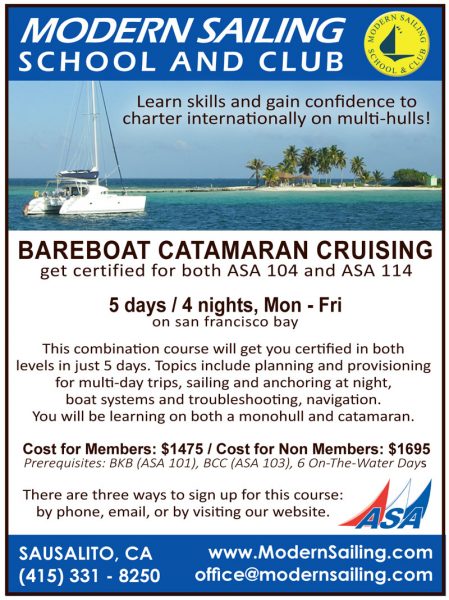
The 50th Transpac Crosses the Line
The 50th running of the Transpac got underway on Wednesday afternoon in classic Southern California conditions, with light winds, flat water and sunny skies. Thirty-five yachts ranging from 33- to 67-ft, including two cruising catamarans, sailed across the starting line off Long Beach’s Point Fermin and began making their way across more than 2,000 miles of ocean to Oahu, Hawaii. Today, the second wave of starters — again close to 40 yachts — will take their start in Transpac 50, while the fast trimarans and fastest monohulls will start tomorrow.
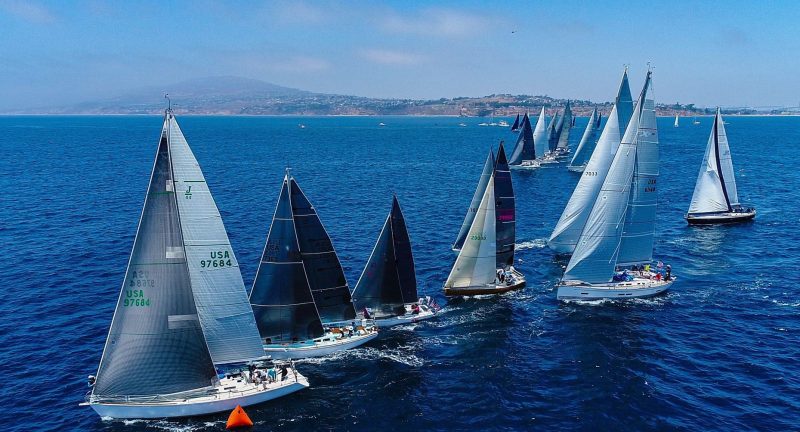
Despite being the first start of the race — normally reserved for slower and less glamorous boats than the big maxis that headline Saturday’s start — there was a massive spectator fleet present for the first fleet. Paul Stemler’s J/44 Patriot won a surprisingly crowded and hotly contested pin-end of the starting line. Managing to scrub off enough speed to avoid being over early before falling back off and avoiding hitting the pin, Patriot’s bow crossed the line a moment before the race committee gave the all-clear signal for the fleet to proceed toward the Channel Islands.
Once clear of the line, the fleet made their way toward the west end of Catalina Island where they were met by renowned yachting photographer Sharon Green, who was flying in a helicopter with a long-range telephoto lens. “It got really puffy at the island and a couple of boats were even reefed,” reported Green. “Shortly after Catalina, it went really light as the boats sailed into a grey marine layer,” she added.
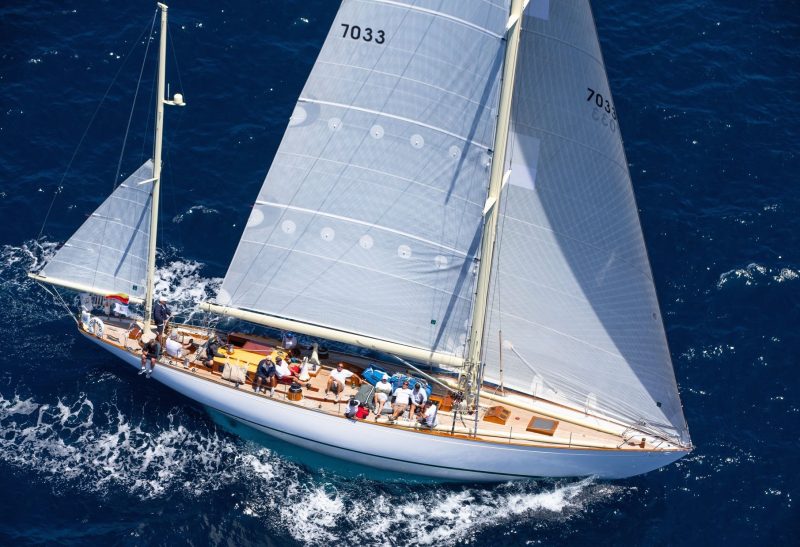
Though the forecast was for a slow departure from the coast, the fleet is currently moving along nicely, with the biggest and longest-waterline cruising boats in the fleet making a steady nine knots, while the smallest and shortest-waterline boats on the water are making a respectable seven-knots-and-change on a southwesterly heading.
Two boats have retired from the race thus far and are headed back to port — with no injuries reported. Kyle Vanderspek’s Hobie 33 Aloha, which sailed to Hawaii in last year’s Pacific Cup and looked to be a pre-race favorite in Division 8, has turned back to port citing a cracked rudder post; they’re making 3.5 knots towards the coast. Mark Ashmore’s Cal 40 Nalu V had an undetermined ingress of water and have decided to return to port.
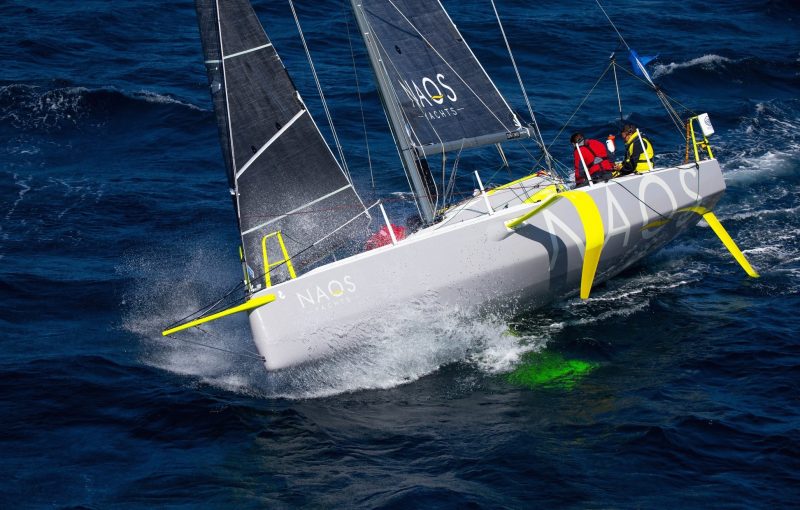
Today’s group of starters, which includes big handicap fleets of fast 40- and 50-something-ft boats — including nearly a dozen Santa Cruz 50s and 52s — is slated to sail over the starting line at 1 p.m. this afternoon in conditions that should, again, be very typical of Southern California, with the sun and the sea breeze fighting the fog and marine layer just offshore, creating light-to-moderate conditions for the initial beat to get past Catalina and offshore. Stay tuned to ‘Lectronic Latitude for frequent updates on this historic Transpac, and head over to the Transpac website to view the website and the race tracker, which is run on a four-hour delay.
Jeanne Socrates Nears the Equator and Homestretch
Jeanne Socrates has been at sea for 281 days. That’s over nine months, which represents the beginning, middle and end of several sports seasons, and gestation of a human being. We think it’s now safe to say that Socrates is approaching the homestretch. Superstitious as we are, we’re not saying that she’s “made it” or that it will be all smooth sailing from here.
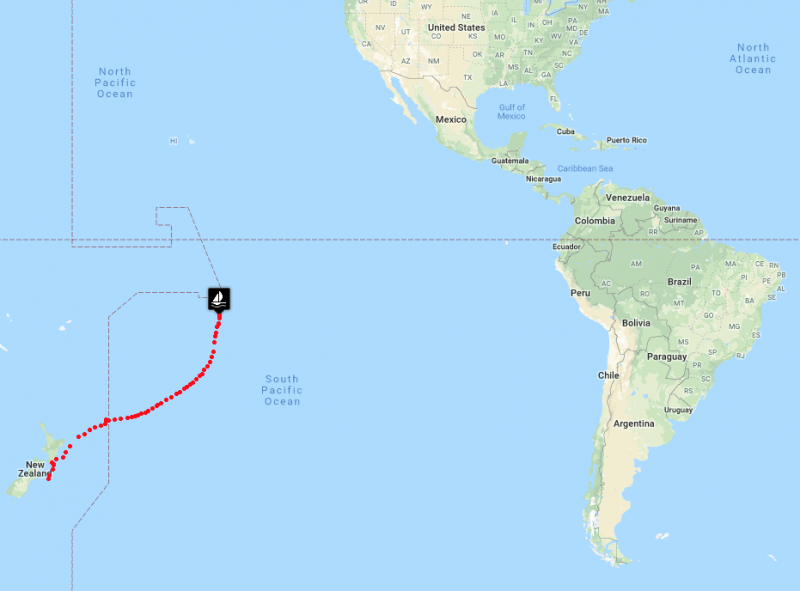
In fact, in her latest blog, Socrates described yet another repair to her mainsail. “Have been patching up the main in different places so far today — lots needing attention; tears and holes. Slow progress. Have taped up along the leech tear on both sides to hold the torn edges of sail cloth together — now need to sew the tabling into place over both sides and around the leech edge. Often quite rolly still so not a quick and easy job to carry out.”
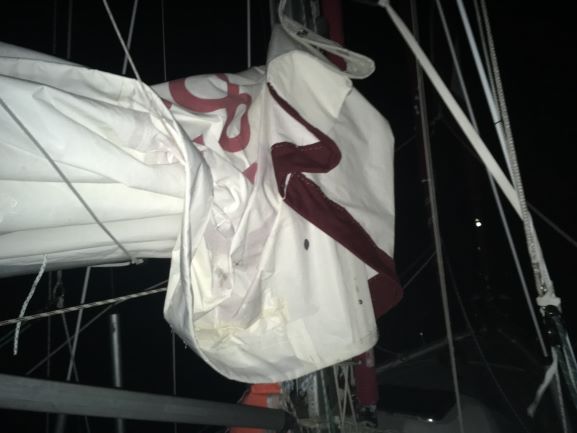
It’s not all business for Socrates. While becalmed and sitting at the sewing machine, she observed, “So very peaceful out here, with no sound at all except occasionally from the sea.”
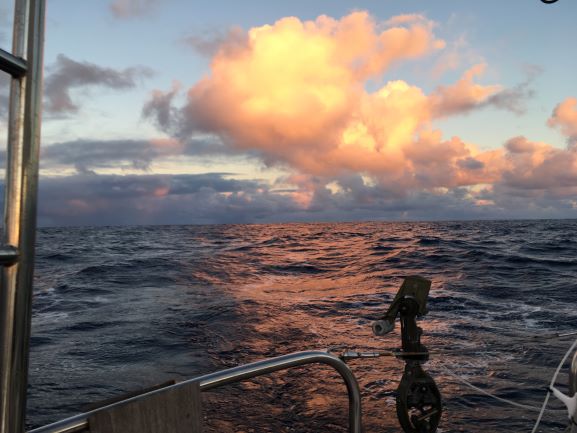
Now in the South Pacific, Socrates recently passed close to Tahiti and Moorea. She had hoped to use the lee of the islands to make her repairs, but was inundated with rain. “Just what I didn’t want since I was just about to stick sail repair tape over leech tear in mainsail. Feeling pretty frustrated with today’s events — was taken in direction of reef in virtually no wind and so have spent a lot of time trying to keep us away from it. We frequently ended up going around in a circle with such light wind and so I often had to jumo to the wheel, but all at very little speed since wind has been so very light. I steered to anywhere we could actually hold a course for a time, so long as it took us away from the reef direction.”
Socrates got close enough to snap some photos.
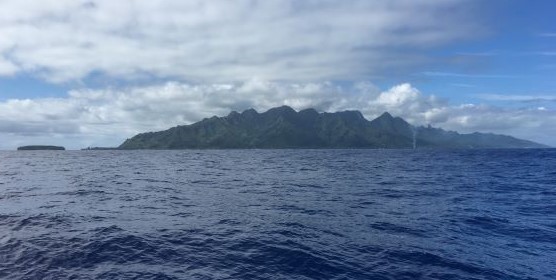
We’ll check in with Socrates a few more times before she is well and truly in the homestretch into Canada.
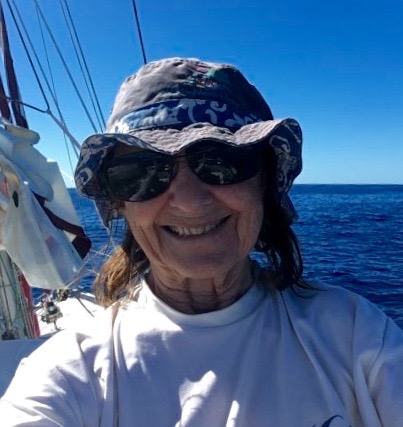
Catamaran Cruising with Modern Sailing
When a Butterfly Flaps its Wings in China
In the 1990 film Havana, Robert Redford’s character says, “A butterfly can flutter its wings over a flower in China and cause a hurricane in the Caribbean . . .” While the sentiment is somewhat mythological, it’s not irrelevant to the upcoming 2019 hurricane season, or the arrival of tropical storm/hurricane Barry on the Louisiana coast. The threats to people, property and the local environment are always the primary concern, and the impacts of these huge weather events can reach far beyond the epicenter of the storm.
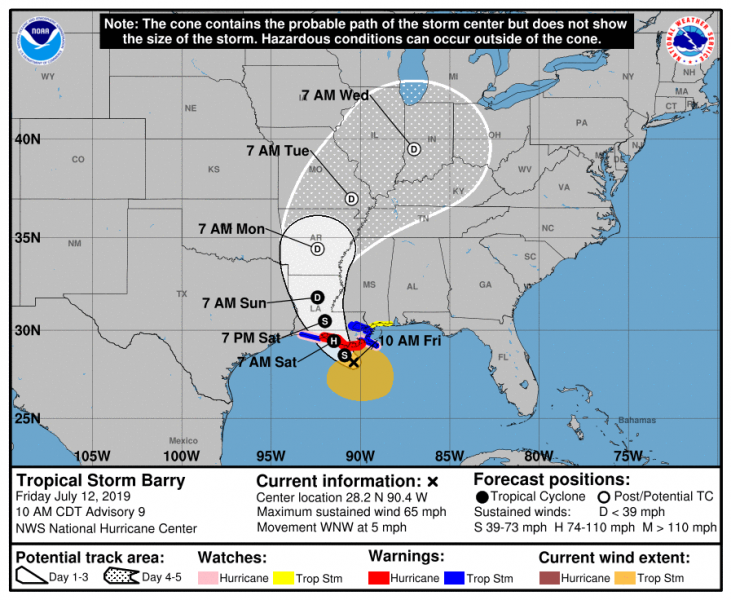
The effects of Hurricanes Maria and Irma in 2017 also created an insurance storm, causing insurance-company-algorithm creators to work overtime adjusting their formulas to predict the mysterious tempest-related future for sailors. Insurance agents and cruisers in the South Pacific all report a shifting environment, as insurance companies recalculate the odds of hurricane losses.
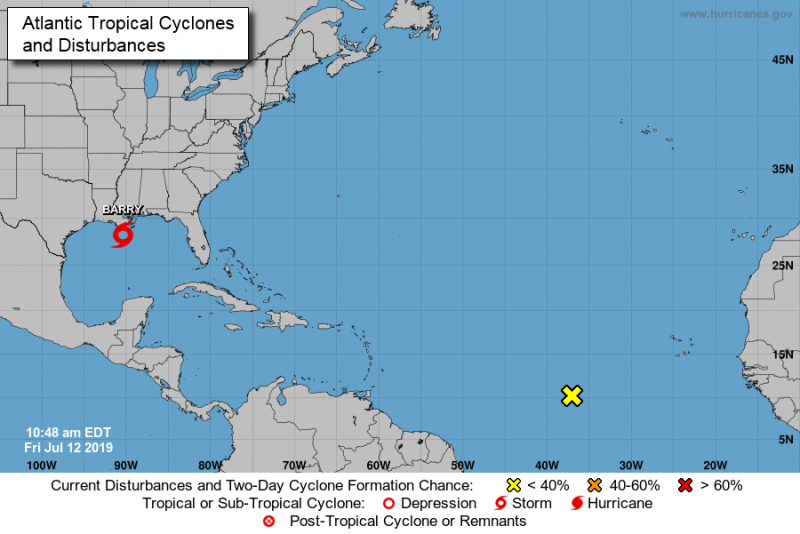
We’ll be keeping our fingers crossed tonight for the people on the Louisiana shoreline, while we also look for that butterfly in China that started this whole thing. We’ll also be keeping our eye out in the future to see how these storms affect sailors — regardless of their location. If you’re out cruising and have some insights into how the storms have trickled down into the insurance market for cruisers, let us know.
The 12 Meter Worlds, as Beautiful as Ever
Bay Area resident and sailor Dick Enersen, who grew up sailing from age 8 in Tiburon, is back at it. Enersen has countless miles of racing under his belt, including crewing in the America’s Cup aboard Constellation in 1964. He’s also produced several action-packed sailing films, and now spends much of his time cruising aboard his Cal 46 Brass Ring in the Pacific Northwest. When the opportunity arose to join the 2019 12M Worlds in Newport, Rhode Island, Enersen grabbed the torch, assembled the crew, and headed back to his old stomping grounds. Twenty-one 12 Meters in six classes are assembled to bring back the glory days of these legendary classics.
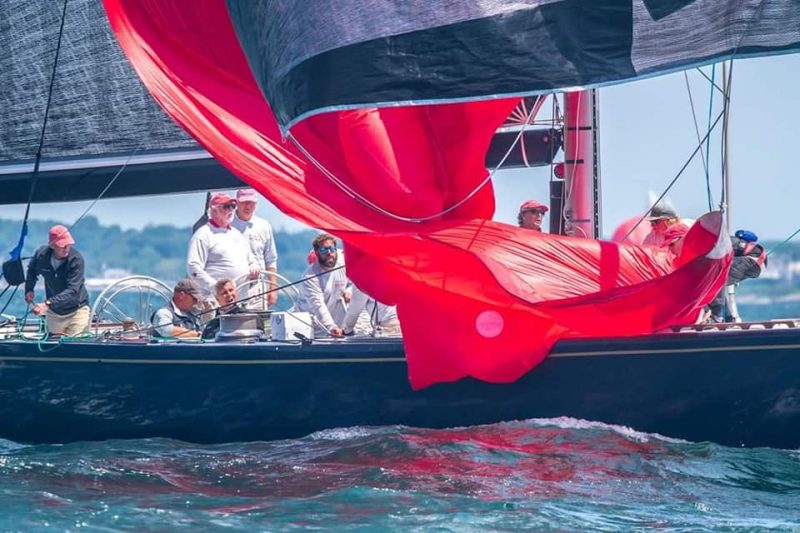
Enersen and crew are aboard Defender, which raced in the 1983 America’s Cup trials with Tom Blackaller as skipper and Paul Cayard on the crew. In the Worlds, Defender is in the eight-boat Modern Division — the largest and star-studded fleet with people like legendary tactician and broadcaster Gary Jobson, sailing aboard his 1977 America’s Cup winning Courageous (on which he called tactics for Ted Turner). The event is the biggest collection of 12 Meters racing together since the America’s Cup Jubilee in Cowes in 2001.
Despite the America’s Cup moving on to more modern boats, many 12 Meter devotees are keeping the class active and the boats looking beautiful. While many are sailed in other parts of the world, their long history with the America’s Cup has kept Newport as the central hub.
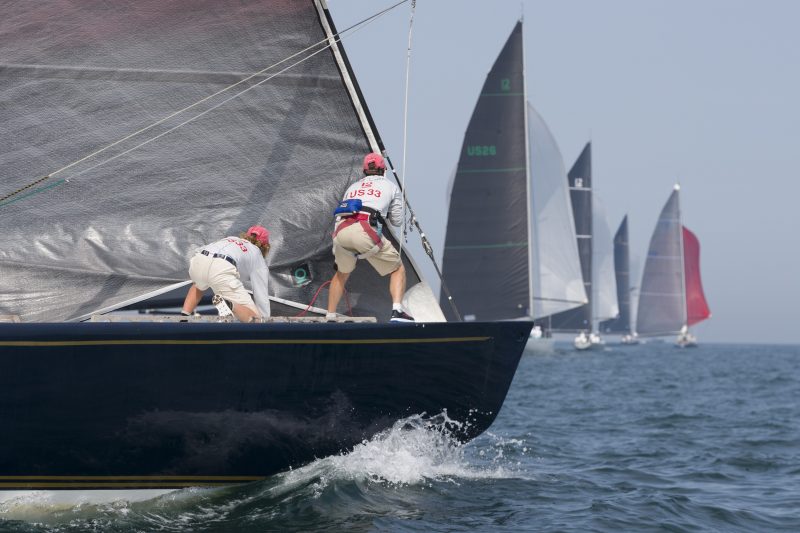
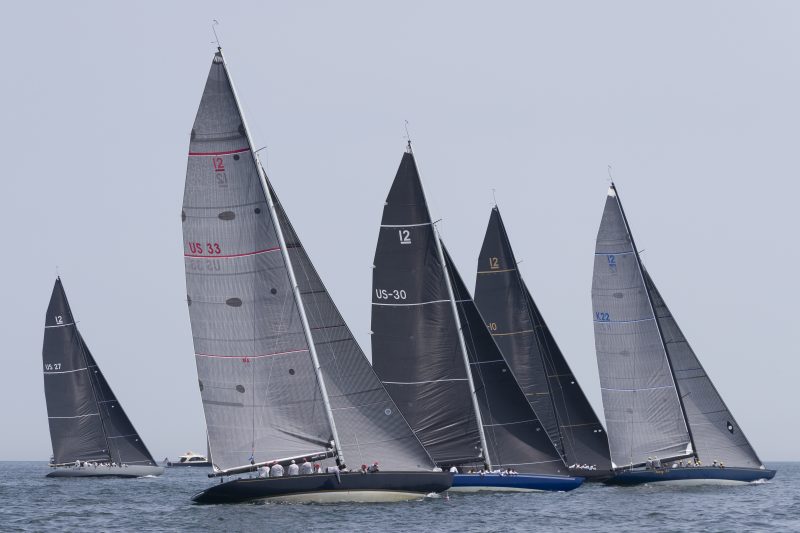
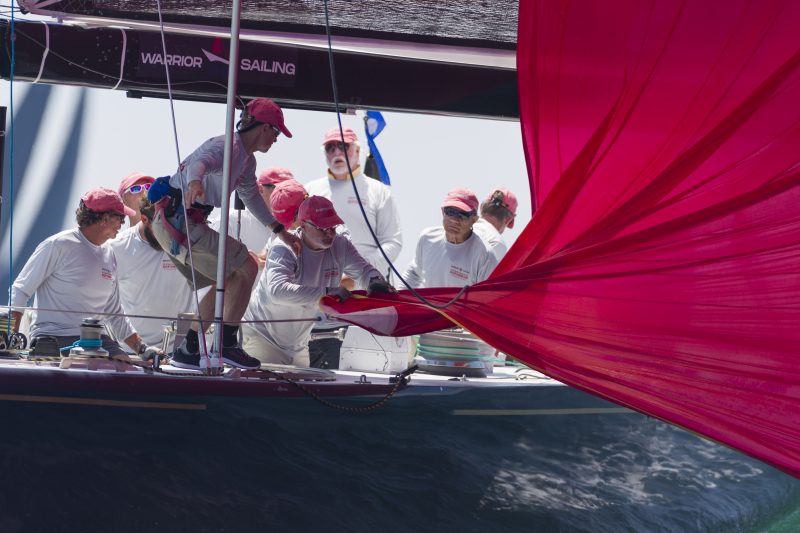
Racing started on Tuesday and will end after nine races, weather permitting, on Saturday. The two races held on Thursday were in classic Narragansett Bay conditions of 12-15 knots in the upper Bay north of the Pell Bridge. After six races. the Enersen crew has shown consistency with five seventh-place finishes and a sixth in the last race.
Enersen wrote in saying, “We were last to join the event, but we’re having a great time. The competition in the Modern Class is formidable, but we are not last and we’re getting faster every day. Above all, we have a great crew, and there are many old friends in and around the event.” With three races remaining, the top slots are settling in, but to be aboard any boat for this event is, without a doubt, a lifetime treat. Winning aboard Constellation in 1964 was a pretty big deal, but sailing Defender in the 12 Meter Words is hard to beat.
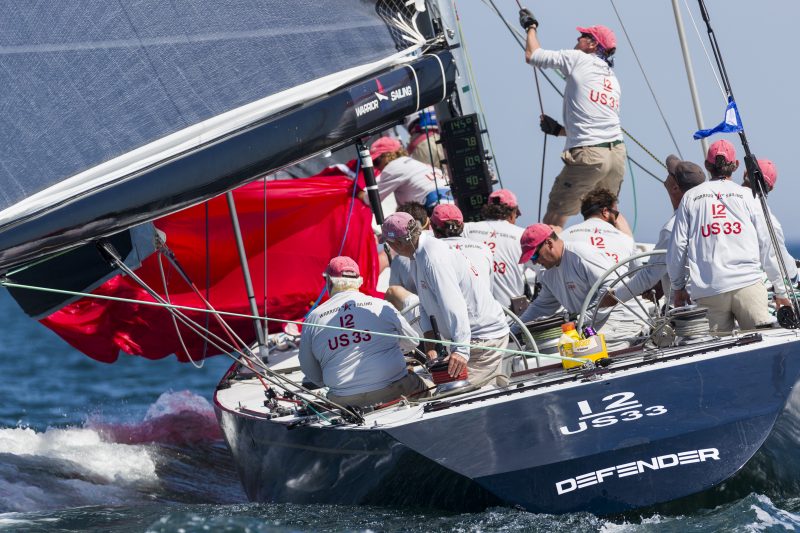
You can follow the 12 Meter action here.

